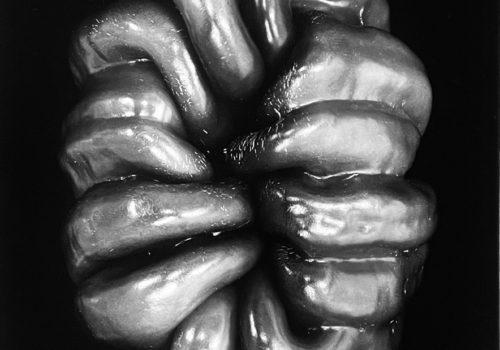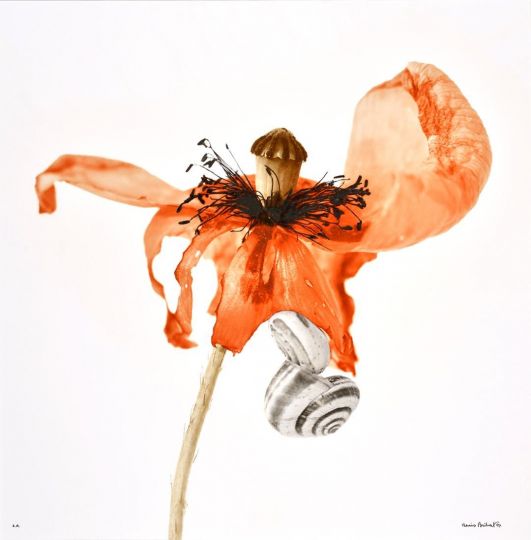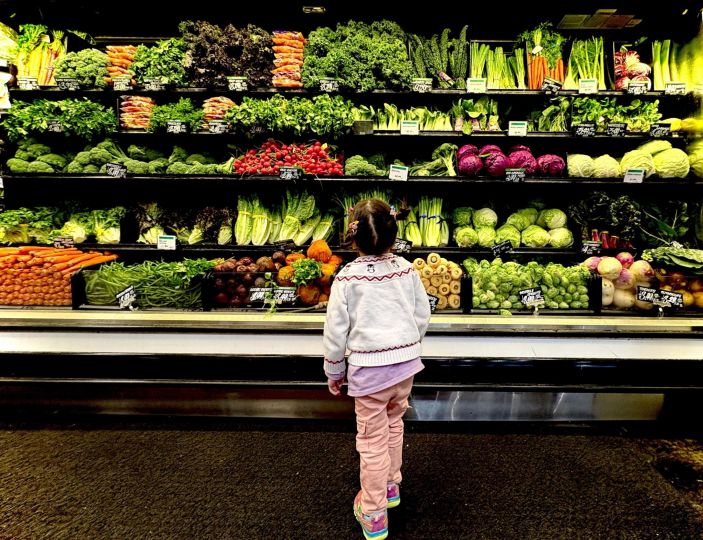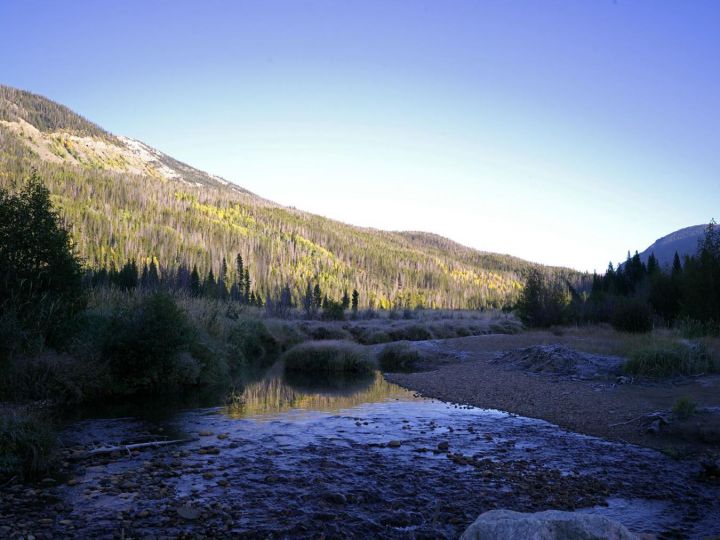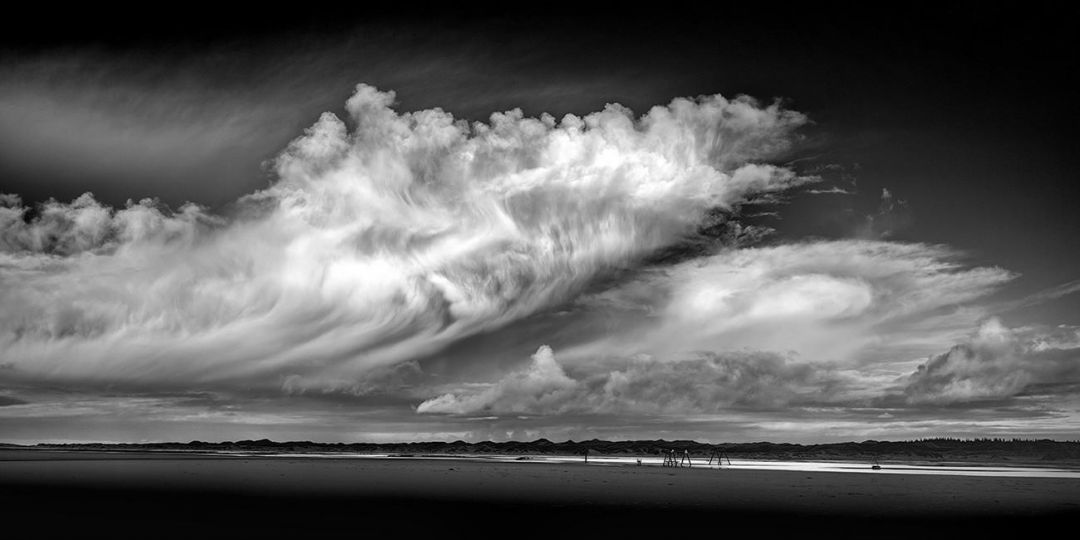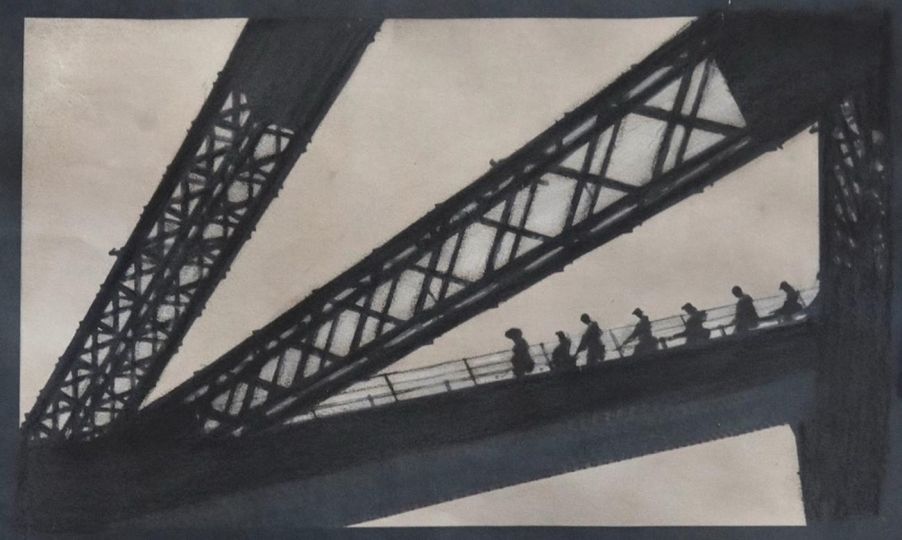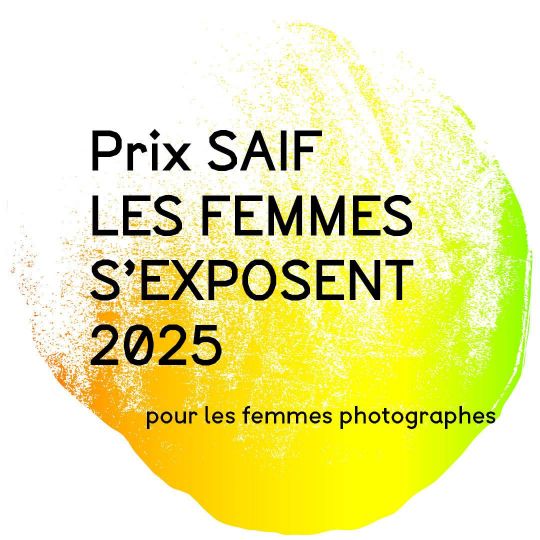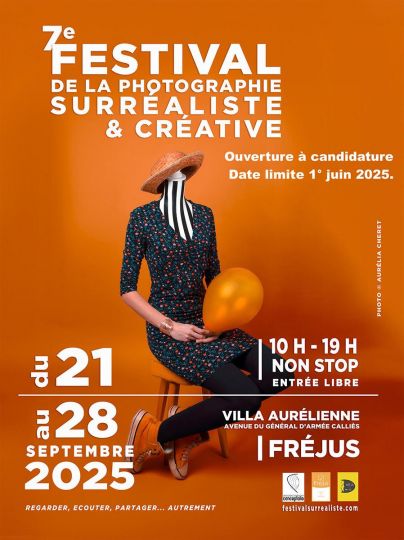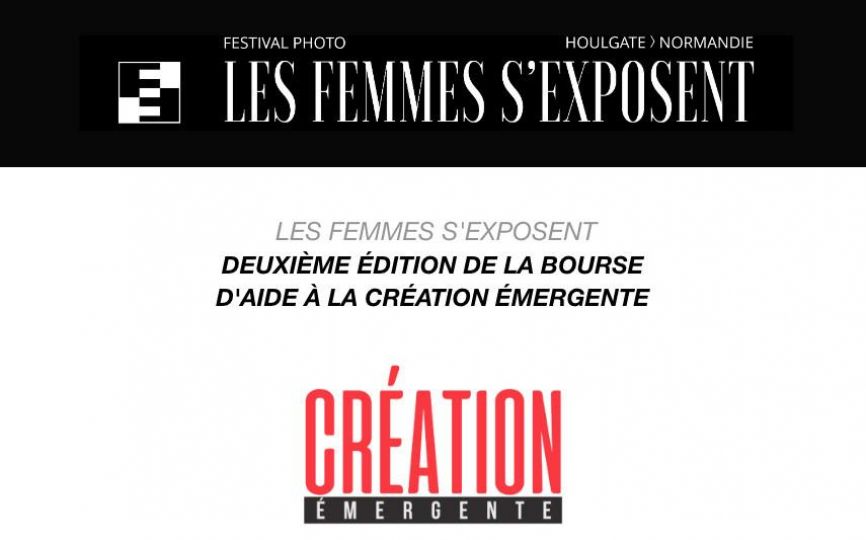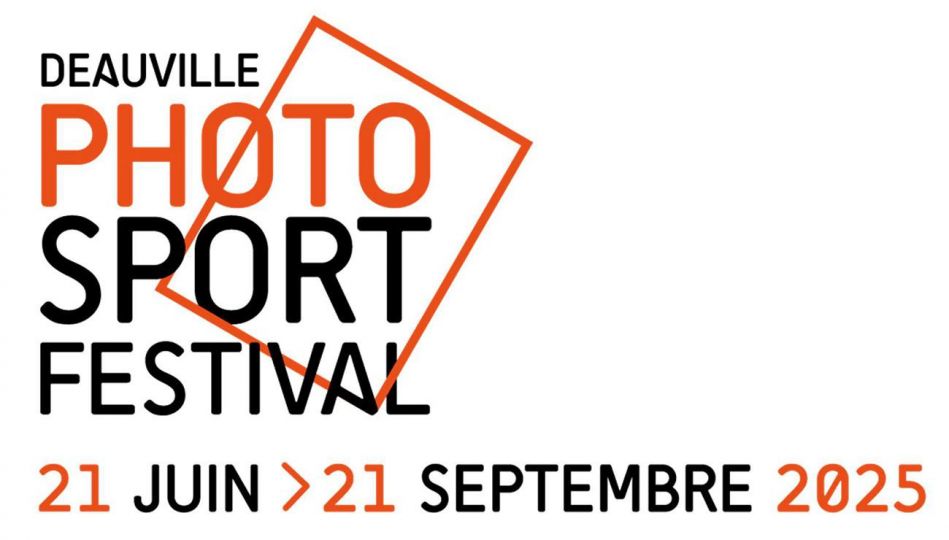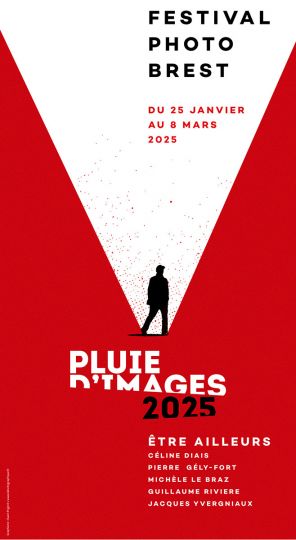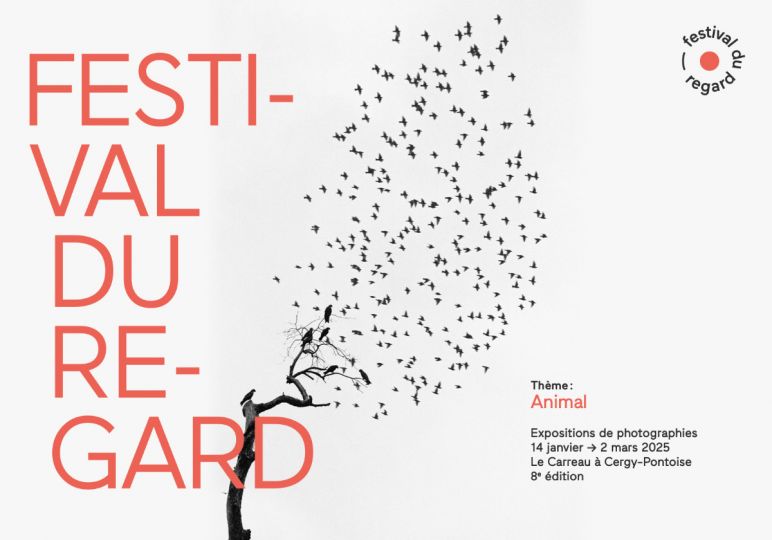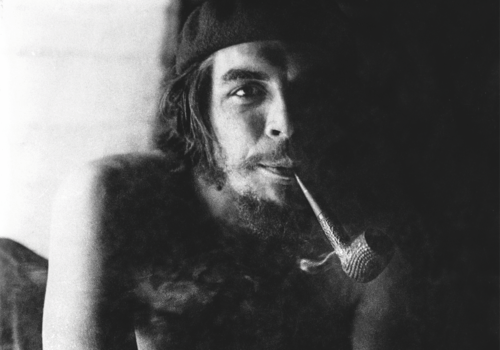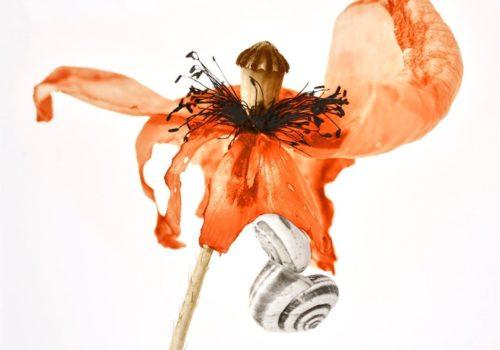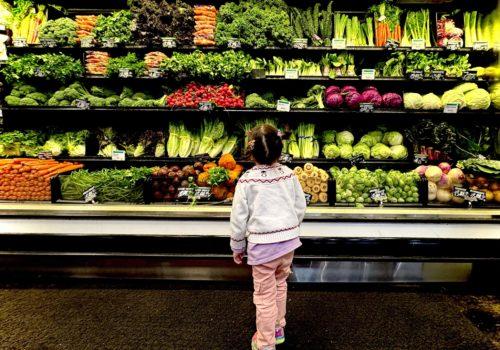Our collaborator John Devos wanted to pay tribute to Denis Brihat on the occasion of his exhibition at the Michèle Schoonjans Gallery, Rivoli Brussels as part of the PhotoBrussels Festival.
‘ ‘ I can’t find any interest in still lifes any more; since the invention of photography, I feel they no longer have any sense. Well, that’s a personal point of view…’ he concludes apologetically.. ‘ -says a character in Michel Houellebecq’s novel La carte et le territoire, 2010. The personage may never have looked at the works of Denis Brihat & Danielle Kwaaitaal…
The Dutch term ‘Stilleven’ originated around 1650 and was translated in English as ‘Still Life’, while in Latin languages ‘Nature Morte’ has been common since 1750. The genre itself emerges around 1600 with originally a moralising slant, but soon lush bunches of flowers, richly filled tables and eventually showy scenes dominate, reflecting the moneyed mercantile citizenry. We chose two photographers who give the genre a contemporary twist, a very respectable one indeed…
Denis Brihat was undoubtedly the last living grandmaster of a generation of photographers such as Jean Dieuzaide (1921-2003), Jean-Pierre Sudre (1921-1997), Jean-Philippe Charbonnier (1921- 2004), Jean-Claude Gautrand (1932-2019), Lucien Clergue (1934-2014) & Édouard Boubat (1923 -1999) and yet he is not really known by the general public – entirely unjustifiably…
The figure of Denis Brihat cannot be summarised in a few words: pioneer of ‘photography as art’ in Europe, tireless researcher, one of the founders of Les Rencontres d’Arles (just about the world’s most important photo festival) and involved in the creation of the Galerie du Chateau d’Eau (Toulouse), innovator, passionate teacher at his own school with a unique knowledge of black-and-white photography, multiple award-winning artist and honoured with exhibitions just about everywhere in the world, gardener…
Clearly, Denis Brihat, born in 1928, lived several lives. At the age of 15, he got his first camera, a Vest Pocket Kodak which he claimed had been used during the First World War period. He briefly went to school at the École Technique de Photographie et de Cinématographie in rue Vaurigard Paris (today part of the ENS Louis Lumière), but his coup de foudre, his moment of enlightenment came with Edward Weston’s exhibition at the Kodak-Pathé gallery in Paris in the spring of 1950. A conscript in Germany at the time, he weaselled a permit in order to be able to see the exhibition. The simplicity of subject and composition, the emphasis on form and line made an indelible impression on him.
Through the mediation of Robert Doisneau (1912-1994), he was recruited by the Rapho photo agency as a correspondent in Provence. He opened a studio in Biot (Alpes Maritimes) in 1952, roamed around on a Lambretta scooter ánd photographed Picasso, Marcel Pagnol, Jacques Prévert, Germaine Richier, Jean Cocteau, Fernand Léger. He integrated into the artist community, and in 1954 was part of the exhibition Groupe Espace, which strived for critical modernity and for unity in art. The synergy of the artists, and in particular the influence of Leger’s oeuvre, lead Brihat to new insights: why make images that we let disappear in a publication? Could we present photographs just like a fresco?
The restless Denis receives an invitation from Louis-Frédéric (Nussbaum1923-1996), to accompany him to India (1955-56). Once arrived they decide to each explore a part of the continent, Denis Brihat created a brilliant reportage on the Sikh community that was afterwards awarded the 3rd Prix Nièpce. A crowning achievement for his work but also a personal turning point – he said goodbye to humanist reportage and portrait photography. It is as if the India trip made him look into his heart, and at the same time gave him the courage and strength to change his life direction.
In February 1958, he asked a question: either to stay in Paris or leave for the Luberon. Doisneau’s answer was brief: I would have been there already… He finds a cabane on the Plateau de Claparèdes (near Bonnieux in the Vaucluse), with no electricity, no water, and created his home, his studio, his garden ánd his impressive oeuvre there.
In Bonnieux, Brihat lived a hermit’s life, and shaped a new art almost as a contemporary Renaissance man. He worked tirelessly for the recognition of photography as a fully-fledged form of expression. He no longer pursued his subjects, he found them in his immediate surroundings: in the garden, on the beach or in the kitchen. For more than five decades, he has been photographing ‘nature’, and especially that which we pass by, the unsightly: an artichoke, cabbage, mushrooms, a pear, thistle; a pebble on the beach or some seaweed. And onions, lots of onions.
He innovated visual language: like Léger, he opted for large format – at a time when images were printed in a publication, and sometimes, exceptionally exhibited in small format. The influence of Edward Weston (1886-1958) on Brihat’s work is unmistakable, Brihat lending it a contemporary character. He played with the boundaries of abstraction, but ultimately turned to the essence of the image – the grandeur of the minute. He made images of onions and poppies again and again, and when one questioned him about it he replied wittily: Surely one does not question Cézanne about Mont Saint Victoire either?
Brihat’s visual language goes hand in hand with his research into the image. He spent a lifetime experimenting to further refined images in the darkroom. All his photographs are black-and-white shots, but the final image is realised by the master in the darkroom: with photographic etching techniques (grignotage or nibbling as he described it himself) through which he erased dark areas, as well as by toning images with iron, gold, selenium, copper… salts through which he realised a colour image. The basis for the knowledge lies in the 19th century, and is still accessible to everyone today. Brihat tirelessly improved techniques to perfection, in an endless process of trial and error Sometimes he worked on a print for up to a month – calling them ‘photo-paintings’ is an understatement. Even though a photographic image is at the origin, Brihat’s prints are works of art – totally unique creations whose colours will not be affected by time.
International recognition came as early as 1967 when, together with Jean Pierre Sudre (1921-1997) and Belgian pioneer Pierre Cordier (1933-2024), he was invited to exhibit at MOMA in New York. It marked a great personal accolade, but also a recognition of French photography by the international community of progressive photographers (including subjective photographers, Beat generation, photographers of concrete art…) . Many more exhibitions will follow in France and around the world. In 2019, the Bibliothèque Nationale de France (BNF) crowned his career and highlighted his importance for international photography with a major solo exhibition ‘De la nature des choses’ at the François Mitterrand site.
Denis Brihat passed away on December 3rd at the age of 96: the last of a generation, an extraordinary man with unique works of art and one of those who gave photography international recognition. But also a philosopher with the camera, a cultured man who cherished Bach and Blake – as this quote sums up his oeuvre:
To see a World in a Grain of Sand
And a Heaven in a Wild Flower
Hold Infinity in the palm of your hand
And Eternity in an hour
William Blake – 1757-1827 – Auguries of Innocence
Michele Schoonjans Gallery invites Dutch photographer Danielle Kwaaitaal (1964) to dialogue with Brihat
Danielle Kwaaitaal is the perfect heiress to the still lifes of the Dutch Golden Age. In the 16th century, war raged in the Netherlands, fuelled by political religious and economic divisions. A large part of the population from the south (which coincides with modern Belgium) flees and seeks protection in the North, a situation best comparable to what happens today in the Middle East or Ukraine. Successive military victories, colonial expansion, economic growth, a philosophy based on individual responsibility and commitment, and the political stability of the new state ensured a period of prosperity and well-being among the bourgeoisie in the Northern Netherlands. The upper classes also wanted to shape their prosperity artistically, but under the Reformation they no longer reverted to Romanesque imagery. People preferred genre scenes and still lifes. Precisely the latter were much appreciated: they emphasise beauty but equally bear witness to transience.
Heiress certainly, but just as much a very contemporary artist. Very early on in her career during an internship, she discovered the possibilities of digital editing when she was introduced to the Paintbox (an extremely innovative and expensive tool, which costs $600000 in current price equivalent). She realised her final thesis Bodyscapes with this tool, which was awarded and acquired by the Stedelijk Museum Amsterdam.
A female sensuality is the second constant in her work. In Bodyscapes, she created landscapes by assembling images of her own skin. Soon she added the third constant: water & air bubbles, like in Bubbling (1994), she submerges bodies, photographing details and… bubbles.
It also reflects a search for an innovation because for Kwaaitaal, reality in itself is not satisfying, reality is boring, there is nothing lofty about it.
Kwaaitaal does not opt for classic tabletop photography, but employs custom made water tanks. She adds dyes to the water, which then provides density /depth of field and a specific atmosphere. The flowers are weighed down, and when shooting, she has to move quickly, as the bubbles on the objects create their own touch, which Kwaaitaal describes as ‘’little gifts‘’.
Michèle Schoonjans Gallery is showing works from the series Black-Out (2017), Florilegium (2017-2023), Zephyr (2021, Sole (2023) and Mirage & Fluorescent (2024), thematically they form a big arc.
In Florilegium & Blackout, fresh cut flowers represent sensuality and nature. In Zephyr (2021, Sole (2023) and Fluorescent (2024), she replaces the natural world with objects. The inspiration from the compositions of Giorgio Morandi (1890-1964) is obvious, but she takes them to another level.
The pottery and glassware come from her own collection, and she has to pay particular attention to the compositions with historic glassware, as they have quirky effects. In the latest series, Mirage (2024), she combines flowers and glassware again into a single motif.
The artist stresses that in these series the difficulty lies in finding the right composition. It is precision work, which of course is also influenced by the choice of materials. As in Brihat’s work, her choice of camera is not without consequences: she picks a medium format camera. The dimensions of the reservoirs equally determine the image, similar to the space of the studio where you make an image. In post-processing, she inverts light and colour so it looks like the subject is radiating light.
Kwaaitaal does not consider herself a photographer but an artist with the camera. She finds the balance between digital manipulation and photographic realism, and achieves an absolute mastery due to control during the shooting. She explains her working method very openly because she realises that her uniqueness lies in the mastery of analogue shooting and the precision of digital post-processing – specific knowledge based on long experience. A weak imitation is possible, copying, however, isn’t.
The exhibition originated from a dialogue between Michèle Schoonjans and John Devos, and the exhibition’s staging is entirely in the hands of Danielle Kwaaitaal and Francis Boeske.
John Devos
20 12 2024
Historian & art historian
University college lecturer, curator and art critic
johndevos.photo (a) gmail.com
Venue
Michèle Schoonjans Gallery
Waterloosesteenweg, 690 / Galerie Rivoli #25
1180 Uccle
https://micheleschoonjansgallery.be
the exhibition will run from 12 January to 1 March
Open from Thursday till Saturday 12:00 – 18:00
Exceptionally opened on Sunday 09/02 14:00 – 18:00

